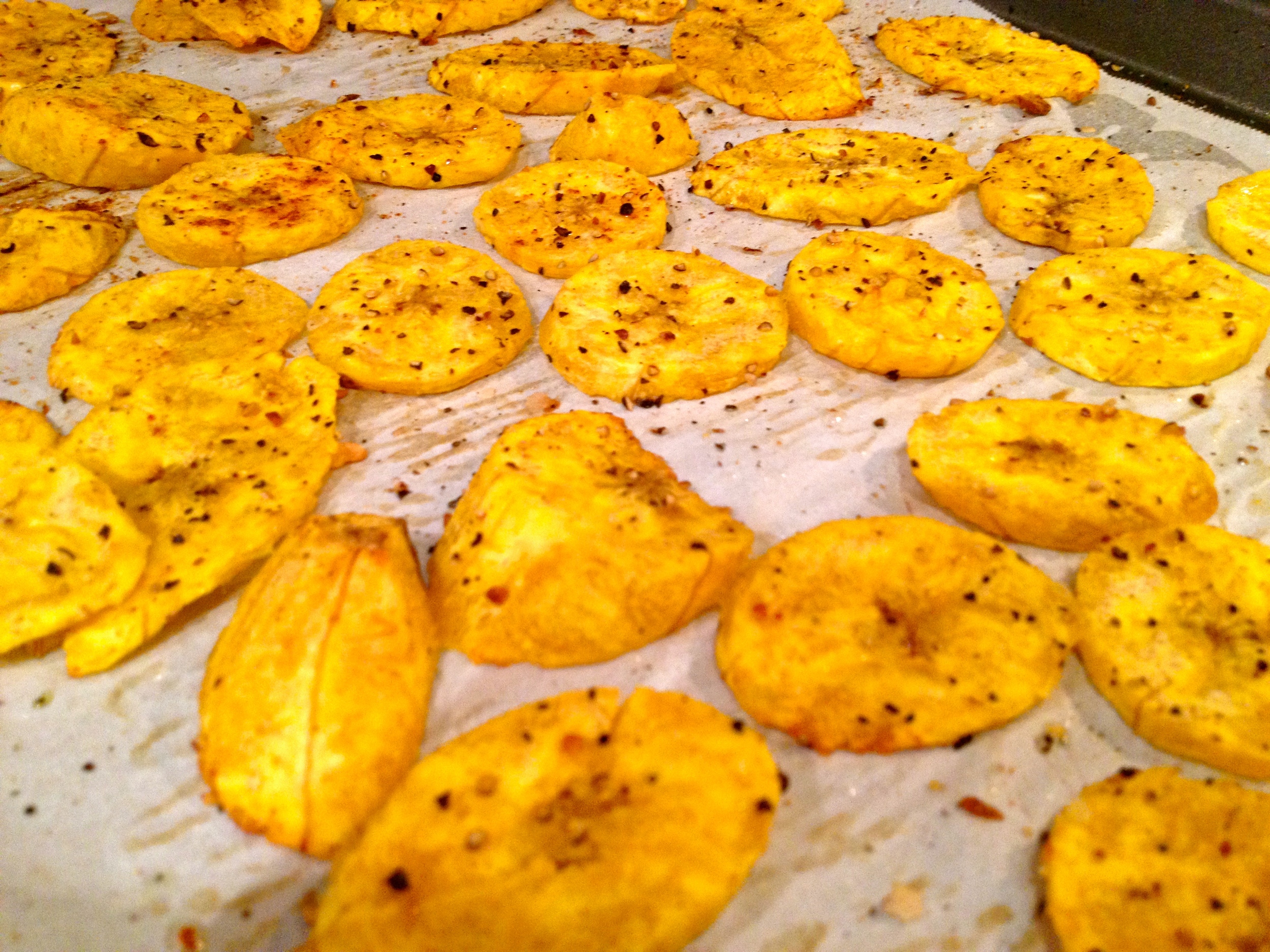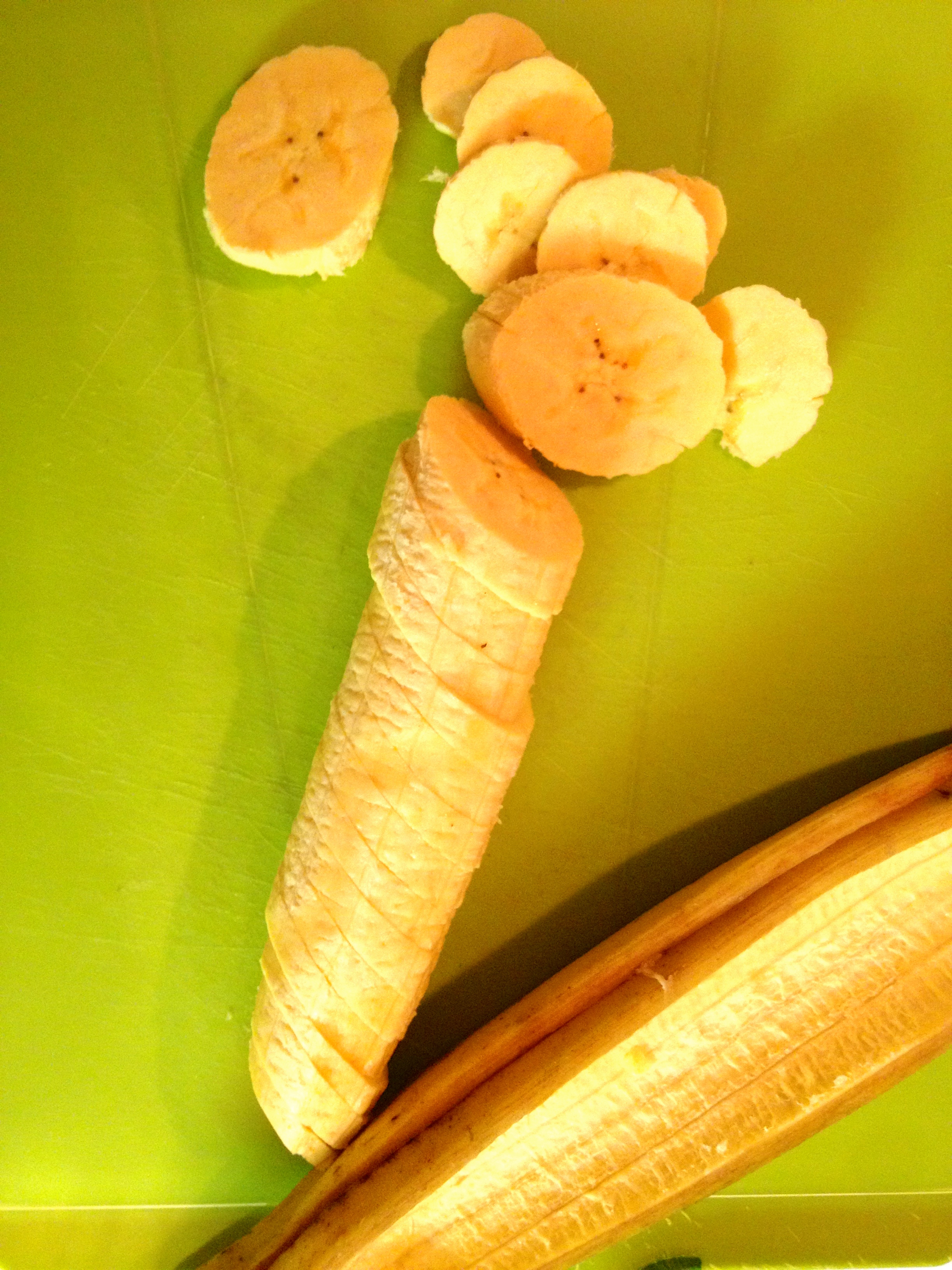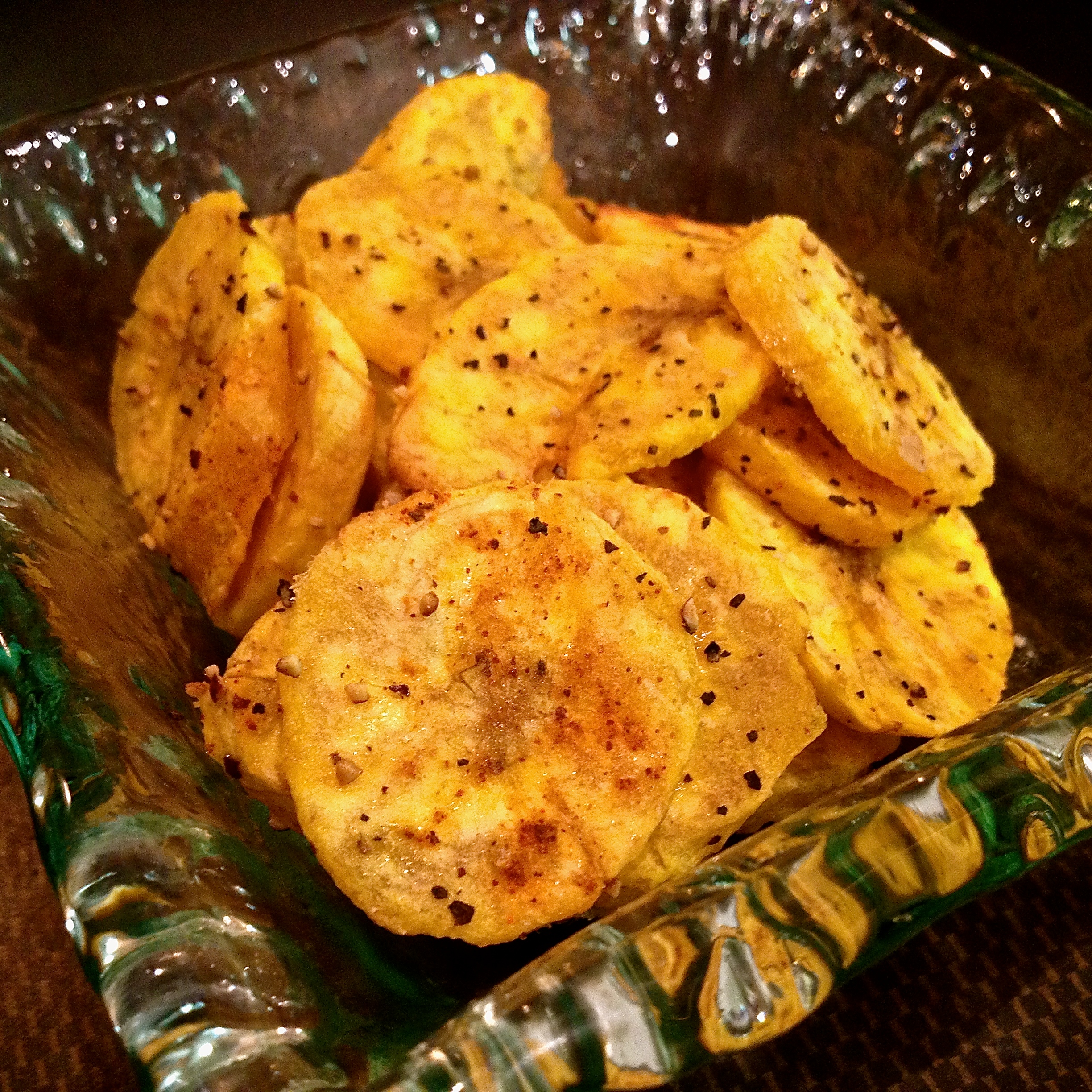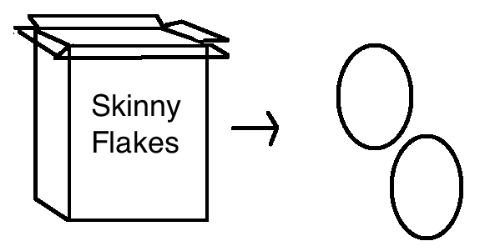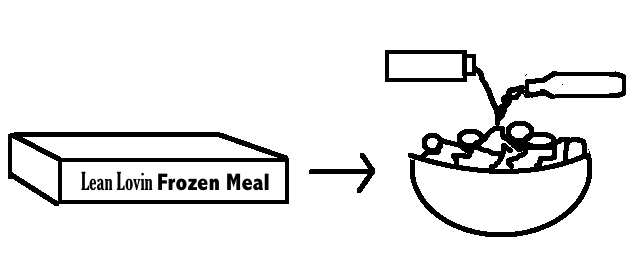I try very hard to eat as much real, whole food throughout my day as possible – from my eggs in the morning and my sweet potato and hot sauce snack in the late morning, to my veggie-packed salads at lunch and my afternoon apple.
But every once in a while, I just need a REAL snack. You know what I’m talking about. The kind that crunches and maybe leaves a layer of seasoning on your fingers after you’ve reached into the bag 5 or 6 or 20 times. I’m not talking Doritos, Cheeze-its and Chex Mix, here. I ruled those out a long time ago when I realized how much crap they contained. I’m talking about the healthier snack options that give me all the satisfaction without ingesting unidentifiable ingredients. I’ll snack my heart out, but I made a personal choice that if I do, it at least had to begin as a whole food before it was transformed into a snack.
Side note: Shout-out to my Cheeze-it-loving work neighbor Neil – you know I love you and support your snack choices as long as they make you happy 🙂
That’s why I fell hard and fast for the snack aisle at Trader Joe’s. Wasabi peas, dried snap peas, crispy veggies and crunchy chips made with every healthy ingredient imaginable – kale, flax seeds, chia, plantains, quinoa. For me, it was love at first sight. I thought, so I can have all of my favorite healthy foods in snack form? Bring. It. On.
But, as usual, I couldn’t just accept this delicious convenience at face value. Why? Because any packaged food has a lot of mystery to it. No matter how healthy the label makes it look; you know very little about how the “food” you’re eating was created.
When inspecting, nutrition labels are always my first step. Trader Joe’s does a great job at using a short list of ingredients, all seemingly identifiable.
Here are the ingredients in a few of my favorites:
Plantain Chips: Plantains, Sunflower Oil, Salt
Wasabi Peas: Green peas, corn starch, wheat flour, rice flour, sugar, palm oil, sea salt, wasabi (mustard powder).
Inner Peas: Whole green peas, vegetable oil (canola oil and/or sunflower oil), rice, salt, calcium carbonate, vitamin C
Pita Chips: Pita bread (unbleached wheat flour, yeast, sugar, salt, water), sunflower and/or safflower oil, sea salt
APPARENTLY (said in the voice of the apparently kid), these ingredients are a lot more deceiving than they look because of one key factor.
The oil.
I know, I know. It sounds a little dramatic to hate on these snacks when there’s a lot worse you can do. But bear with me.
Not all oils are created equally. And we’ve been conditioned to believe certain oils are good for us (or at the very least, harmless). THEY’RE NOT.
Let’s break it down.
There are three types of oils: Saturated, Mono-Saturated and Polyunsaturated. Think of them like Goldilocks and the Three Bears (kind of).
- Polyunsaturated = very unstable (too hot)
- Mono-saturated = pretty stable (a little better)
- Saturated = stable (just right)
Unfortunately, it’s the highly processed, polyunsaturated oils (also lovingly known as PUFAs) that are the most common ones used in packaged snack food.
Here are the PUFAs you know and love:
- Canola Oil
- Corn Oil
- Soybean Oil
- “Vegetable” oil
- Peanut Oil
- Sunflower Oil
- Safflower Oil
- Cottonseed Oil
- Grapeseed Oil
- Margarine
- Shortening
- Any fake butter product (yeah Fabio, I’m talking to you)
THE REASON PUFA(S) SUCK:
Well, there are a few reasons. But the number one reason is these oils – believe it or not – CANNOT TAKE THE HEAT. In other words, they are not strong enough to stand up to the high temperatures that they are regularly cooked at. When you heat them, they deteriorate chemically (AKA, they go rancid). THIS IS BAD.
You see, contrary to what you may think, PUFAs are not natural at all. Although they call them vegetable oils; they are actually manufactured chemically.
Let’s take canola oil. There is no such thing as a “canola.” It’s actually made from a hybrid version of the rapeseed. But they couldn’t use natural rapeseed to make oil because it contains high amounts of acid called toxic euricic acid. This baby is poisonous to the human body (say WHAT?). So to make it edible, they lowered the acid level by genetically modifying the seed.
To produce canola oil, they heat the rapeseed and extract the oil using a petroleum solvent. Then they do another round of heat to remove the solids that occur during the first processing. This is then followed by adding more chemicals to improve color, texture and smell. It gets more complicated, but I have no business explaining it because I am no scientist. Which is exactly the point.
I shouldn’t have to be a scientist to understand how my food is made.
Saturated, stable fats like butter and coconut oil on the other hand, are made in a few simple steps with little-to-no processing, don’t release foreign chemicals into your body when ingested and CAN TAKE THE HEAT (they’re stable. Duh). Milk cow, let cream separate naturally, skim off cream, shake until it becomes butter. DONE.
Unfortunately, these stable fats are expensive. They’re the last thing that food companies want to use when processing mass amounts of a snack. PUFAs, however, are nice and cheap to use. Which means they are EVERYWHERE. If you’re not cooking with them, you’re definitely eating them in any pre-packaged foods, i.e. SNACKS. The worst part is, now that I’ve told you, you won’t be able to ignore it (please don’t hate me for doing that to you). Yep. Every time I turn over a snack package to read the ingredients, 95% of the time, one of the aforementioned oils are on the list.
Sometimes it really sucks knowing this much.
DON’T HATE ON TRADER JOE’S
With all this said, I don’t fault Trader Joe’s at all for their ingredients. In the grand scheme of things, their snack options are worlds healthier than a lot of the other shit out there. And I am eternally grateful to them for providing me with those options for me and others on tight budgets.
However, in my quest to make the healthiest choices for my body (and be a test dummy for you, my readers), I am going to do my darndest to make sure my snacks are made with the right oils.
Wouldn’t it be nice if that just meant picking the good-oil snacks up at the store? Yeah, when pigs fly out of my butt (said in the voice of Wayne Campbell). Of course, there are options out there, but they are expensive and hard to find. So what is the best option? (Yell it out if you know it).
MAKE IT MYSELF
As always, if I can make it myself (and get it right), not only will I feel better about what I am eating, but it will taste better too (way better).
If I had to pick one packaged food snack that I love the most it would be Trader Joe’s plantain chips – hands down. If you’ve never tried them, I encourage you to ignore everything I said in this post, run to Trader Joe’s, and devour a bag in one sitting, just so you can understand where I am coming from.
Okay, back to the point. I made it my mission to create Trader Stacey’s Plantain Chips: A whole-r, better plantain chip made with the oils of my choice.
The result? Well, they don’t taste like the TJ brand. But they are pretty damn good. And I plan to make them many more times, which means they are bound to get better with every try. So please proceed with an open mind and an open jar of saturated, stable oil. Here’s the recipe.
TRADER STACEY’S PLANTAIN CHIPS
INGREDIENTS:
- 3 GREEN plantains (the less ripe, the less sweet and the more savory)
- 1-2 tablespoons of Coconut oil or Ghee (eyeball it)
- Seasonings of choice (I used garlic, cayenne and paprika)
- Salt & Pepper
DIRECTIONS:
- Pre-heat oven to 425 degrees
- Slice open peel by chopping the ends first and then scoring the sides with a knife
- Slice the plantain VERY thin (I don’t have a mandolin so I just used my steady hand, but if you have one, I’m sure it would make things easier). I also sliced them on the diagonal so they would be flatter and wider.
- Repeat with the other two plantains
- Toss in a bowl with the melted coconut oil
- Sprinkle seasonings on both sides
- Place on baking sheet over parchment paper
- Put in oven for 15 minutes
- Pull them out of the oven, flip them over and MASH THEM DOWN with a spoon, a spatula or the bottom of a glass. THIS IS WHAT HELPS THEM GET CRISPIER without frying them.
- Stick them back in the oven for another 10 minutes. Check on periodically until they are a little browned and you’re happy with them. I think it depends on personal taste how “done” you want them. I like to err on the side of undercooked rather than overcooked.
ONE LAST NOTE:
I only just scratched the surface of this oil discussion in this post. And it made me realize, this has HEALTHY STACEY SERIES written all over it. So far I’ve told you that most of the oils we eat (in packaged foods) are chemically processed. And although we all know that’s not a great sign, it doesn’t necessarily translate to how it hurts you by eating it. And it doesn’t tell you what oils you should eat instead? Or what packaged foods ARE out there that are safe to eat? SO MANY UNANSWERED QUESTIONS. So get excited. Because I just got inspired to write THE OIL SERIES.
Next Up:
Omega-3 is from Mars, Omega-6 is from Venus
Sources:
- http://www.marksdailyapple.com/oil-fat-overheat-smoking-point/#ixzz3HHcsNLgT
- http://wellnessmama.com/2193/never-eat-vegetable-oil/
- http://articles.mercola.com/sites/articles/archive/2003/10/15/cooking-oil.aspx




